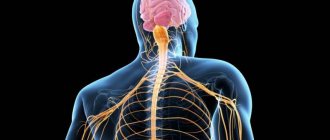© Narrated by Andrey Arkadyevich Shmilovich
, Doctor of Medical Sciences, doctor of the highest category, head of the Department of Psychiatry and Medical Psychology, Russian National Research Medical University named after. N.I. Pirogova, chief physician of the Alter clinic:
Today in the series on comparative age aspects of mental disorders we will talk about mental disorders of childhood
.
We will talk about pre-pubertal age, that is, up to approximately 10–12 years, during which the child goes through several stages of his psychophysical development. This is a very important age from the point of view of the development of his mental functions, his personality, and character. This age also has its most significant periods. They are distinguished by the special vulnerability of the child’s psyche to external social, sometimes pathogenic factors. These periods of particular vulnerability are called age-related crises.
In childhood, age-related crises are well known to psychiatrists, psychologists, and teachers - these are the ages of 3 years and 7 years.
Formation of the first communication connections
At the age of 3, the child finds himself on the threshold of kindergarten. When, on one of the joyful days of September 1, his mother takes him to some strange institution, in which for some reason he must be without his parents for quite a long time, surrounded by very strange people who are similar to him, and even some kind of aunt , calling herself “the educator,” demands that he fulfill the requirements that are necessary.
This age is very important from the point of view of the formation of the child’s first communicative connections with peers. It is at this age, at 3 years old, that the first rudiments of role identity appear. The child begins to recognize himself as an individual and identify himself as an individual, separate from those around him. Finds in himself those traits that are not in others, and finds in others those traits that he does not have. He begins to understand the difference between himself and others, the first signs of his individuality are formed.
This is a very important period, and personally, I categorically do not advise ignoring preschool institutions, kindergartens, sports sections, clubs, where the child has the opportunity to develop a sufficient number of communication skills.
Children at home who sit with their grandparents around the clock and only go out in good weather to the sandbox in the yard are much less well adapted to school than those children who in preschool age had the opportunity to establish communicative connections and form their social role.
Dangerous signs of psychological abnormalities in a child
Modern science claims that the consciousness of a child under 5 years old, like a sponge, absorbs all the words and actions of loved ones. If, under the age of one year, a mother ignores her child, feeds him when necessary, does not respond to his tears, and is indifferent to his complaints of discomfort, the baby rejects the sensory sphere completely, his consciousness records the uselessness of emotions, which are subsequently “thrown away” by him as unnecessary. A style of communication in the family based on dictatorship, role models based on cruelty and violence, scandals between parents - the baby transfers all this to himself, creating in his mind a certain picture of the world, which he perceives as a reference. The psyche of a child who is subjected to sexual or physical violence at the age of 4-5 is deformed in a similar way: in a consciousness that has not yet been fully formed, what is happening is perceived as a norm that should be imitated. This is how psychopaths appear, who simply return their coin to the world. There are psychological deviations that are important to prevent in time. If you notice at least 3 of the following in your child, hurry up and show him to a child and adolescent psychiatrist.
Zoosadism A child tortures and kills innocent animals - this is how internal aggression and tension are taken out in a particularly cruel form on the weak and defenseless. Such behavior has nothing to do with the harmless pranks of a child exploring the world, who can “cut or dye a cat” or “pull its tail.”
Lack of understanding of complex emotions The child shows coldness towards others and does not understand his own emotions, is not able to experience such high feelings as love, empathy, sympathy, pity. Such a child only plays the role that others expect from him, but does not experience anything. Thus, he imitates a feeling without really understanding it and becomes a good manipulator.
Deceit The child lies and tells “fairy tales.” For an ordinary child, lying is a defensive reaction, a way to avoid parental punishment, but for others it is pleasure. Caught in a lie, he will not repent and will not admit his guilt, but will insist on his own with calm calm. Sometimes, however, he can respond with hysterics to the “exposure.”
Enuresis A child suffering from enuresis is often subjected to aggression from others: he suffers condemnation and sometimes beatings from his parents, and experiences humiliation and ridicule from his peers. An inappropriately aggressive reaction on the part of society contributes to the formation of an inferiority complex in a minor, who, having matured, takes revenge on the world, showing hot temper and ruthlessness.
Deviant (deviant) behavior A child rebels, behaves defiantly, does not keep promises, skips classes, is insolent to elders... Deviant (deviating from the norm) behavior is typical for a teenager: in this form, he desperately tries to attract the attention of others to himself. But for some teenagers, such behavior is a way of life. Leaving home, wandering, trying drugs, stealing - this gives them pleasure and adds adrenaline.
Pyromania A child sets fires and watches the fires, experiencing pleasure and buzz from it. He is not at all concerned about the consequences of the offenses he has committed. Playing with fire serves as a release from internal rage: someone else’s pain compensates for one’s own, associated with the experienced physical or social humiliation.
Bullying the weak The child suppresses other children, exerting physical and mental violence, persecuting and humiliating them. Both a domestic bully and an overbearing bully can behave this way, but in contrast, some teenagers hurt others for their own pleasure. They are incapable of feeling pity.
If you discover dangerous signs in your child, seek help from a child and adolescent psychiatrist. Remember, the sooner you correct the behavior of a little person and teach him to overcome psychological difficulties, the easier it will be for him and for you in the future!
Neurotic disorders of childhood
During this period, the child is stressed, he may have a large number of various types of neurotic disorders. And we know these disorders well. enuresis may suddenly appear
– urinary incontinence, we can observe bitten nails in these children. These children may experience a large number of fears; they refuse to sleep in a separate room with the lights off; even if they are forced to sleep in the nursery, they still find the opportunity to sneak into their parents’ bedroom at night and crawl under their blanket.
These children very often develop behavior problems
in case they face quite a lot of stress factors. And kindergarten teachers pay attention to these behavior problems. Sleep disturbances, bad mood, tearfulness, capriciousness, loudness, sometimes excessive demonstrativeness, posturing may appear - we call all this childhood neuroses or childhood neuroses.
Children do not display such neurotic symptoms as we are used to seeing in adults, because their affective emotional sphere has not yet matured, and they cannot experience this or that difficult life situation the way adults do, so most often they react with their bodies.
Children have a very developed psychosomatic reaction
. Their neuroses, as a rule, are of a somatic nature. As I already said, enuresis is one of the types of childhood neuroses. There is also stuttering - this, too, in 90% of cases is attributed to the psychological neurotic problems of the child. This also includes various kinds of conditioned diseases; most likely, they can be found in the form of symptoms from the gastrointestinal tract. Children may experience pain symptoms that are not confirmed by examinations.
Sometimes children experience what is called aspiration syndrome.
, when at the moment of just such another violent emotional reaction they suddenly begin to choke, they experience bronchospasm, the question arises that perhaps this is bronchial asthma. Well, and many, many other such polymorphic, unusual things that happen to children precisely during their age-related crises.
So we don't get tracked
One evening, without turning on the light, her mother told five-year-old Daria that they wanted to kill them. The woman called her new neighbor a witch and believed that enemies could break into the apartment at any moment. Fleeing from ill-wishers, the family moved twice until they finally locked themselves at home. The grandmother brought food, and they lived on her pension and alimony from Daria’s father.
From the age of five to 13, the girl was locked up. She was not sent to school, and all her education boiled down to “working through textbooks from cover to cover.” “I still don’t understand why none of the relatives paid attention to this,” said Daria Trofimova from Moscow. — Subsequently, I talked to them about this topic, but they shifted the responsibility onto each other. They said: “We thought my father should have done this. We thought grandma should have done this. We thought your aunt should have done it.” In general, it’s a vicious circle.”
The girl’s mother explained all the illnesses by saying that they were irradiated with a laser. Some part of the body was damaged, and that’s why it hurts. So Daria suffered from otitis media at home. They took her to the clinic only once, after which her mother said that they shouldn’t have done it. After all, now the enemies know their exact location! From now on I definitely won’t step foot outside. The apartment, according to the mother, was also bugged, so they spoke in a whisper so that the neighbors would not find out the content of the conversations.
When Daria was 13, she had to run away again. On a winter night, he and his mother packed their things, wrapped themselves up tightly (so that their faces were not visible) and went to the Moscow region, to their grandmother. They spent the next year and a half there, during which Daria began to be released onto the streets. She began to communicate with the neighboring girls, even inviting them to visit. They found out that Daria does not go to school and her mother does not work. Hints and giggles began, incomprehensible to the girl.
“One day my aunt asked: “Don’t you understand that your mother is mentally ill?” I was very offended by her then, but a year later my mother’s aggression was directed at me. She said: “You conspired with people who want to kill us, you betrayed me.” Regular beatings began. And at some point I was afraid that she would simply kill me, because she punched me in the face in the middle of the night. Grandma knew what was happening and told me to be patient. I waited a few more months and about a month before my 16th birthday I ran away,” Daria shared.
She went to her grandfather in Moscow, where three months later other relatives found her. Daria was finally sent to school, and after the ninth grade she entered college on her own. During this time, her mother visited a mental hospital twice and was diagnosed with paranoid schizophrenia. After the next discharge, the woman hanged herself. Daria was in shock from this news, and, according to her, for the next 12 years she worried about what happened.
After a long life locked up, the girl almost did not know how to communicate. In all groups, she kept herself apart and did not understand how to establish close relationships. And at the age of 24, severe depression began, and Daria still takes medication: she was diagnosed with anxiety-depressive disorder. Daria is working through her traumatic experience in psychotherapy and believes that many questions still remain.
“I changed a bunch of meaningless jobs and only at the age of 30 I realized what I wanted to do (now the heroine is 34. - Note TD). I am sure that it was my mother’s illness that provoked my interest in people’s psychological problems. But in general, I live quite well with this background. I was able to graduate on my own, enroll in higher education and work. Probably, everything is not as bad as it could be,” Daria said. Now she is studying to become a psychologist herself.
Photo: Adam Winger / Unsplash.com
Problems of school maladjustment
There is also a 7-year-old crisis. This is the age when a child starts school. And here he gains even more independence, here he begins to understand what responsibility is, begins to receive the inclinations of ideas about legal capacity, that is, the idea that his actions have some consequences, and these consequences are connected specifically with him.
At this age, the child is also quite vulnerable. First-graders can stumble already in the first months of school, we call this the problem of school maladaptation
. They are unable to establish connections with classmates, constant disagreements arise with the teacher, they refuse to go to school, they throw tantrums right in class, interfere with everyone’s learning by getting up from their seats, not realizing that they are not allowed to walk around the class. The reaction of teachers means nothing to them; this leads to a serious conflict with many participants in the school process, not only with classmates and teachers, but also with the school principal. And parents are also starting to take part in this.
Many parents take the child’s side, considering him undeservedly offended. They see the problem in the incompetence of teachers and begin to blame teachers, often adding fuel to the fire of these neurotic symptoms and behavioral disorders that I have already mentioned.
Mental disorders in adolescents: how to notice and help in time
12.04.2021
© depositphotos.com
According to WHO, half of all mental health problems occur before the age of 14. If such cases are not detected in time and left untreated, in adult life the person will face consequences that can significantly limit his opportunities. About how to behave correctly for parents who are concerned about the mental health of children, employees of ANO "CISM"
said clinical psychologist
Ekaterina Rode
.
– What mental disorders occur in children and adolescents?
– The most common are anxiety disorder, disorders associated with stress or mood swings, obsessive-compulsive disorder, attention deficit disorder, hyperactivity disorder, bipolar affective disorder, and schizophrenia is the least common. Depressive and anxiety disorders and related disorders come to the fore.
Bipolar and manic disorders are now more common among teenagers. This is explained by the fact that modern children have a depressive component associated with increased anxiety. The cause of these disorders is the pressure of the social environment. In addition, some diseases are now being popularized and more information is becoming available about them. Against this background, teenagers begin to look for various symptoms and give themselves certain “diagnoses” in order to feel special.
– What does ignoring diseases lead to?
– Ignoring can include the devaluation of mental disorders and psychological assistance, and the unavailability of the necessary specialists. This is fraught with aggravation of diseases and disruption of a person’s normal functioning in society: he cannot correctly place behavioral accents and understand other people. This is how comorbid conditions develop, when one disease is superimposed on another. As a result, a disorder that could easily be corrected with therapy or a little medication progresses to a state where the patient must be admitted to the hospital. When the first signs appear, parents need to immediately pay attention to them and begin monitoring, while trying to give the child more love and care.
It is important for adults to remember: if you ignore a teenager’s problems, he may seek help on his own and end up with unprofessionals. In this way, the child will further destroy his own psyche, which will lead to deviant behavior. The consequences here can be both at a social and personal level.
– Why don’t adults pay attention to children’s mental problems?
– Most often this is caused by ignorance. It is necessary to make changes to the work of educational institutions, talk to parents, inform them about what can happen to children not only physically, but also mentally. We need to convey to people that mental disorders can be treated in the same way as ordinary diseases; there is no need to be afraid or embarrassed.
The situation is changing for the better, but some parents continue to take the problem lightly because they do not consider mental disorders a disease. They reason according to the principle: “We didn’t have this in our childhood, why did it suddenly appear now?” But social conditions are changing, life for modern children is already different. The problem of mental health existed before, it was just not given importance as much as it is now.
– If you don’t notice a mental disorder in a teenager, at what age can it appear and what consequences will it entail?
– The child will grow up with the feeling that something is wrong with him. This will entail serious consequences that can manifest themselves at thirty, twenty-five, and forty years. It is impossible to give an exact age; it is individual for everyone. Sometimes disorders can remain at the psychosomatic level, and sometimes they can develop into severe psychiatry, which already requires treatment in a clinic.
– What can provoke mental illness?
– There are a lot of factors. One of the most significant is the social situation, which devalues the role of a person in society. The popularization of certain diseases is also important. It’s a big plus that mental health began to be discussed, but some diseases began to be talked about too much, they became “fashionable”.
– How to strengthen the mental health of adolescents? What preventative measures should be taken?
– It is important that teenagers are not afraid that their peers will laugh at them or that adults will judge them if they seek psychological help. A global restructuring of all work with human mental health is needed. Schools need not just one psychologist, but a whole staff, so that each child is given due attention and comprehensive work is carried out. It is necessary to involve parents in this work, inform them, and educate them. At the same time, teachers must understand the importance of this process and take it seriously.
If we talk about prevention, then parents need to make sure that the child has a variety of leisure activities, so that he does what he likes. They are obliged to respect his personal space and provide the opportunity for self-expression. It is important for teenagers to be treated not as children, but as adults who have their own personal feelings and emotions that need to be respected and not ignored.
– If a teenager is diagnosed with a mental disorder, how should parents act?
– If parents begin to notice that something is happening to their child, it is necessary not to rush with questions, but to observe his behavior. You can contact the school psychologist and ask him to also observe the teenager at school. And based on these observations, talk to a specialist, first without the child. If your fears are confirmed, then you should seek treatment. The most important thing is not to be afraid. Do not think that if you turn to a psychologist or psychiatrist, this will somehow negatively affect the child’s life. On the contrary, if this is not done, the consequences can be much worse.
Tags:
teenagers child safety
Early mental illness. Mental retardation
In addition to neurotic disorders, quite serious mental illnesses can also begin in childhood, among which today, perhaps, we can classify two diseases as the most common of all other mental disorders of childhood.
The first disease is called mental retardation
. Unfortunately, it happens quite often. If we are talking about severe forms of mental retardation, then it attracts attention even in the first years of life. If we are talking about its mild or borderline forms, then this only manifests itself when the child goes to school, and from the first days he does not keep up with his peers in mastering the material.
Mental retardation can be different; there are many reasons for its occurrence. Among them are many different kinds of neurological or therapeutic, pediatric diseases that the child suffers from very early infancy. Or which started a little later. These include traumatic brain injuries, and some kind of neuroinfections, perhaps some kind of genetic, hereditary, chromosomal pathology, which leads to underdevelopment of the central nervous system and, accordingly, to mental disorders in the form of mental retardation.
Children with mental retardation are more vulnerable to neurotic symptoms, since in the case of mild mental retardation they understand and realize the fact of their inadequacy and see how they lag behind their peers. And they very often find themselves at the center of so-called bullying. Peers begin to mock them, painfully making fun of their odd behavior.
In these situations, when we are dealing with mental retardation, it is very important to promptly resolve the issue of the form of education, to what extent this form in a regular comprehensive school will be comfortable for the child himself if he does not have time there. And how much easier it will be for him to study in a school where the requirements for the educational process are somewhat different, and they are close to the individual, as we say, Waldorf requirements.
Mental disorders and behavioral disorders in childhood and adolescence. Tables
1. Motor restlessness, restlessness: children often move their arms and legs, twist their heads, fiddle with things and clothes, fidget, spin, shift, trample, grimace, perform unnecessary actions with objects, stand up repeatedly, wander around the room, etc. Some children are restless even in their sleep, constantly toss around in bed and can fall out of bed more than once during the night. When walking, children often rush, break into a run, and get ahead of their companions. Excessive mobility may be absent for some time if the child is watching an exciting television program, is engrossed in a game, or is absorbed in some kind of spectacle, but it increases significantly if he has to do homework or anything else that requires concentrated active attention. It is less noticeable in structured situations that require certain behavior than in free, unstructured ones.2. Inability, upon request or in play, to remain still or motionless for more than 3–5 seconds
3. Constant distraction of attention to external, secondary stimuli that are not important in the context of a given situation
4. Impatience, such as inability to wait one's turn in games, group activities, inability to delay gratification, need for immediate gratification
5. Inability to think about answers to questions, answers out of place, given by the first thought that comes to mind, often the question itself is not heard
6. Difficulty in following instructions from outside (not due to the desire to contradict or misunderstanding, but due to the fact that patients cannot concentrate and listen carefully to the instructions of adults)
7. Inability to maintain attention for a long time when performing a specific task or playing activity
8. Inability to see things through to completion
9. Inability to remain silent in the game, often increased talkativeness
10. Difficulties in maintaining a dialogue: does not listen to what the interlocutor is saying, interrupts someone’s conversation, interference in outside conversation
11. Children often do not listen and ignore something said to them.
12. Things needed to complete a task are often lost or forgotten where they were left.
13. Carelessness, frequent falls from heights, into holes, into water, increased susceptibility to injury
14. Emotional instability, frequent mood swings, easy transitions from laughter to tears, sometimes depression, pointless anxiety, fussy restlessness (“body anxiety”)
15. Impulsivity, unpredictability in behavior, a tendency to act without thinking about the consequences of one’s behavior, which can lead to reckless or even dangerous actions.
16. Carelessness, carelessness, sloppiness
17. Lack of concentration, disorganization, inability to plan, maintain order and discipline. When communicating with adults, patients are often too familiar or even cheeky, impudent; due to the characteristics of their behavior, they are often rejected by their peers
18. Irritability, touchiness, aggressiveness (in 75% of patients)
19. There is often a general lack of coordination, a decrease in memory and mental abilities (IQ in many patients is below 100%, perseveration, literal thinking, its concreteness or inability to take into account the context of what is happening), specific impairments in learning abilities (reading, writing, arithmetic), are observed. developmental disorder of speech articulation, defects in the development of hearing and vision, equal use of both hands (absence of a dominant hand), rapid alternating movements, unclear signs of residual organic failure of the brain, sleep disturbances, appetite, the phenomenon of vegetative dystonia, changes in electrical activity on the EEG and a tendency to development of antisocial personal qualities
20. Secondary psychological disorders are common: decreased self-esteem, feelings of inferiority, self-doubt, depressed mood, tendency to self-blame, self-torture, withdrawal from classes, hypercompensatory behavior (deceit, bragging, etc.)
21. There is often a negative attitude towards patients on the part of parents, teachers and educators, especially if they perceive the patients’ behavior as spoiled, bad manners or a tendency to hooliganism
22. The course of the disease is chronic; remissions up to 12 years are usually not observed. After 12 years, patients gradually become calmer, and somewhat later their indicators of active attention improve. In 20% of patients, signs of the disorder may persist indefinitely
Autism Spectrum Disorders
The second most common mental disorder in childhood is autism spectrum disorder. Abbreviated as RAS. The structure of these disorders includes many different types of clinical units. One of the most striking and classic manifestations of autism spectrum disorder was described at one time by the domestic psychiatrist Grunya Efimovna Sukhareva and her foreign colleague Hans Asperger.
This form is now called Asperger's syndrome.
, that is, early childhood autism syndrome, in which a rather pronounced asynchrony of the child’s mental development occurs. In his development, we see a significant acceleration in relation to peers of intellectual, cognitive functions, and to a significant extent a lag in relation to emotional and volitional functions.
The personality of such a child is formed in a deformed way; he ultimately finds himself deprived of the mental capabilities for communication with peers. He has no choice but to withdraw into his own inner world, which is called the “autistic world.” Autistic world
- this is the world of his fantasies, attitudes, known very often only to him. Help for such a child can only be provided by a specialist who has managed to at least somehow look into this world, not to mention getting into this world and understanding its laws.
Classification of child development disorders (dysontogenesis)
The classification is based on a violation of the synchronicity and order of formation of mental functions (according to G.E. Sukhareva).
- Underdevelopment (oligophrenia).
- Delayed development (with concomitant diseases of internal organs - asthenia, with psychological trauma - partial, i.e. partial delays in development).
- Impaired development (dementia).
- Deficient development (with insufficiency of sensory systems - deafness, blindness).
- Distorted development (autism).
- Disharmonic development (psychopathy).
In the presence of early childhood schizophrenia (ECS), they speak of schizophrenic dysontogenesis (Yuryeva O.P., 1971).
Underdevelopment is characterized primarily by mental retardation without pronounced emotional disturbances or disturbances in social interaction. Delayed development is often expressed in impaired speech formation with intact nonverbal intelligence and can be aggravated by pedagogical neglect.
In autism, the level of general intelligence may be different, but its structure is distorted - high verbal intelligence combined with low nonverbal or emotional intelligence. Therefore, to make a diagnosis, it is important to examine the child’s intelligence.
Disturbed development entails deviations in the formation of higher mental functions (memory, attention, thinking and intelligence, volitional and emotional spheres, perception and personal characteristics). The degree of each disorder may vary depending on the severity of the initial damage to the nervous system.
The earlier a violation is detected, the faster and easier it is to correct it. Early diagnosis of lesions of the nervous system is possible even in the perinatal period, that is, before the birth of the child. Sometimes developmental distortions become noticeable only after birth.
Any deviations, even acceleration of development, should alert the parent. This is a reason to contact a pediatric neurologist, psychologist, speech therapist or neuropsychiatrist.
Atypical childhood autism
In addition to Asperger's syndrome, autism spectrum disorders also include other variants: Kanner's syndrome, Geller's syndrome - this is the so-called atypical childhood autism. We begin to talk about atypical childhood autism when, against the background of autistic manifestations, some psychopathological phenomena begin to appear in a child, indicating to us the onset of some kind of mental illness. For example, he begins to have some hallucinations, or he becomes so detached from what is happening that he generally stops reacting to what is happening around him and “freezes” - this is the so-called catatonia syndrome. However, a complete picture of mental illness does not emerge. And these symptoms are ultimately reversible.
We must remember that early childhood autism and all autism spectrum disorders are a very ambiguous group in prognostic terms. In particular, there are options that have a fairly favorable prognosis; literally, all manifestations of autism completely disappear with age and appropriate treatment. At the other pole are those forms of childhood autism that, with age, unfortunately transform into current mental illnesses, more typical of adolescence or adulthood.
Treatment of mental disorders in children
Most mental disorders in children are caused by adolescence and the stage of personality development. If symptoms indicating the development of deviations are detected, it is necessary to stabilize the atmosphere in the family as much as possible, spend more time with the child, talk about topics that concern him and support him in the first uncertain steps without criticism and intimidation. A visit to a psychologist and obtaining an expert point of view will also not be superfluous and will help you correctly plan the process of dealing with an unwanted illness.
Some diseases, such as schizophrenia, which appear already in adolescence, require mandatory drug intervention. However, many other disorders do not require the addition of medications to the treatment of mental disorders in children, therefore, the creation of harmonious relationships with oneself and society should be taken into the hands of parents or psychological professionals.
Onset of adult mental illness. Childhood form of schizophrenia
In addition, in childhood we can, unfortunately, observe the onset of adult mental illness. It is rare, however, that childhood forms of schizophrenia
. Its course is usually very difficult, unfavorable and malignant. In these cases, the child finds himself at the mercy of very severe painful symptoms when he hears voices or sees some visual images that cause him certain fears. When he, being in this psychotic state, hides from these ghosts, which seem very dangerous to him and are present somewhere nearby.
It is practically impossible to establish any contact with this child on a verbal level. The only way to help is to hospitalize him in a children's psychiatric hospital. Such hospitals exist; they specialize specifically in childhood mental illnesses, when specialists in this case have experience working specifically with children.
Schizophrenia, schizotypal disorder, schizoaffective disorder in children and adolescents
Nosological units such as schizophrenia, schizotypal and schizoaffective disorder are combined into one group because they have many of the same symptoms:
1. Schizoaffective disorders are characterized by the presence of affective and schizophrenic symptoms simultaneously; attacks can last several days. In the intervals, the patient’s condition can be regarded as normal, close to recovery. Personality changes observed in schizophrenia begin to appear after 3-5 attacks. The etiology of the disease has not been fully identified; it is assumed that this type of disorder is one of the varieties of schizophrenia.
2. Schizotypal disorder is accompanied by eccentric, slightly strange behavior, anomalies of emotions and thinking. Similar deviations are observed in patients with schizophrenia. But the course of the shipopic disorder does not correspond to the main stages of schizophrenia. Diagnosing this type of disorder is quite difficult, since the lack of severity of symptoms makes it similar to a simple type of schizophrenia, as well as paranoid personality disorder. In this regard, schizotypal disorder is often called latent schizophrenia.
3. In schizophrenia, there is a progressive change in personality that cannot be corrected. This type of mental illness is rare in children at an early age, but it can be diagnosed as early as 2-3 years. The first sign is the child’s fading interest in games and lack of reaction to the affection of loved ones. Then comes a period of extinction of mental activity and inhibition of mental development. The tendency to schizophrenia is inherited, but any stressful situation can trigger the progression of the disease.
All forms of schizophrenia are difficult to correct. The patient cannot be cured completely; only some improvements can be achieved. For disorders that have symptoms similar to schizophrenia, the prognosis is more favorable.
Favorable treatment prognosis
There are also many other mental illnesses, it is almost impossible to cover everything. The only thing that needs to be said is that children with certain mental disorders, as a rule, are treated quite well, that is, it is sometimes possible to achieve much greater results with them than with adults. But only under one condition: if their relatives, especially parents, who are extremely concerned about the health of their child, agree with psychiatrists that their beloved child needs the help of a child psychiatrist.
Child psychiatry, as a rule, uses not only medical, that is, purely psychiatric technologies, with medications or some other methods of treatment. Psychologists are mostly involved in child psychiatry. Family psychologists conducting group psychotherapy, teachers, various kinds of educators, defectologists, speech therapists, and pediatricians participate in the provision of assistance. As a rule, this is a whole multi-professional team that takes on the child’s health and which jointly solves various aspects of his problem.
Seeking medical help in such a situation will greatly facilitate the task of diagnosis, since in child psychiatry there are many methods, including very accurate, almost 100% methods for diagnosing certain mental illnesses.
For example, genotyping is very widely used, when we can with a high degree of probability diagnose a particular disease associated with a mutation or genetics. The main thing is that the child is in the field of view of specialized specialists. The main thing is that he receives the medical care he needs on time in order for his future life to be healthy.










